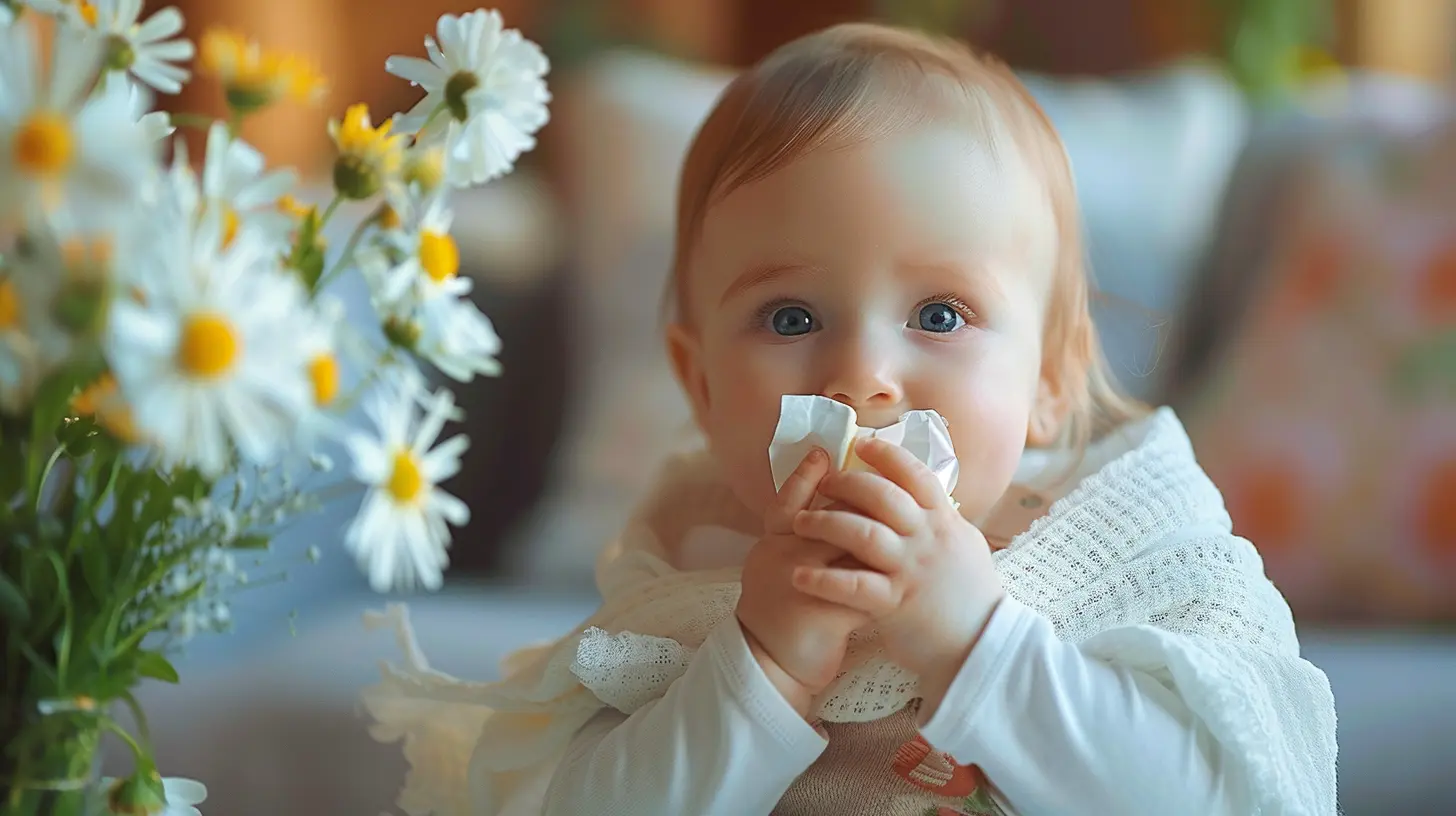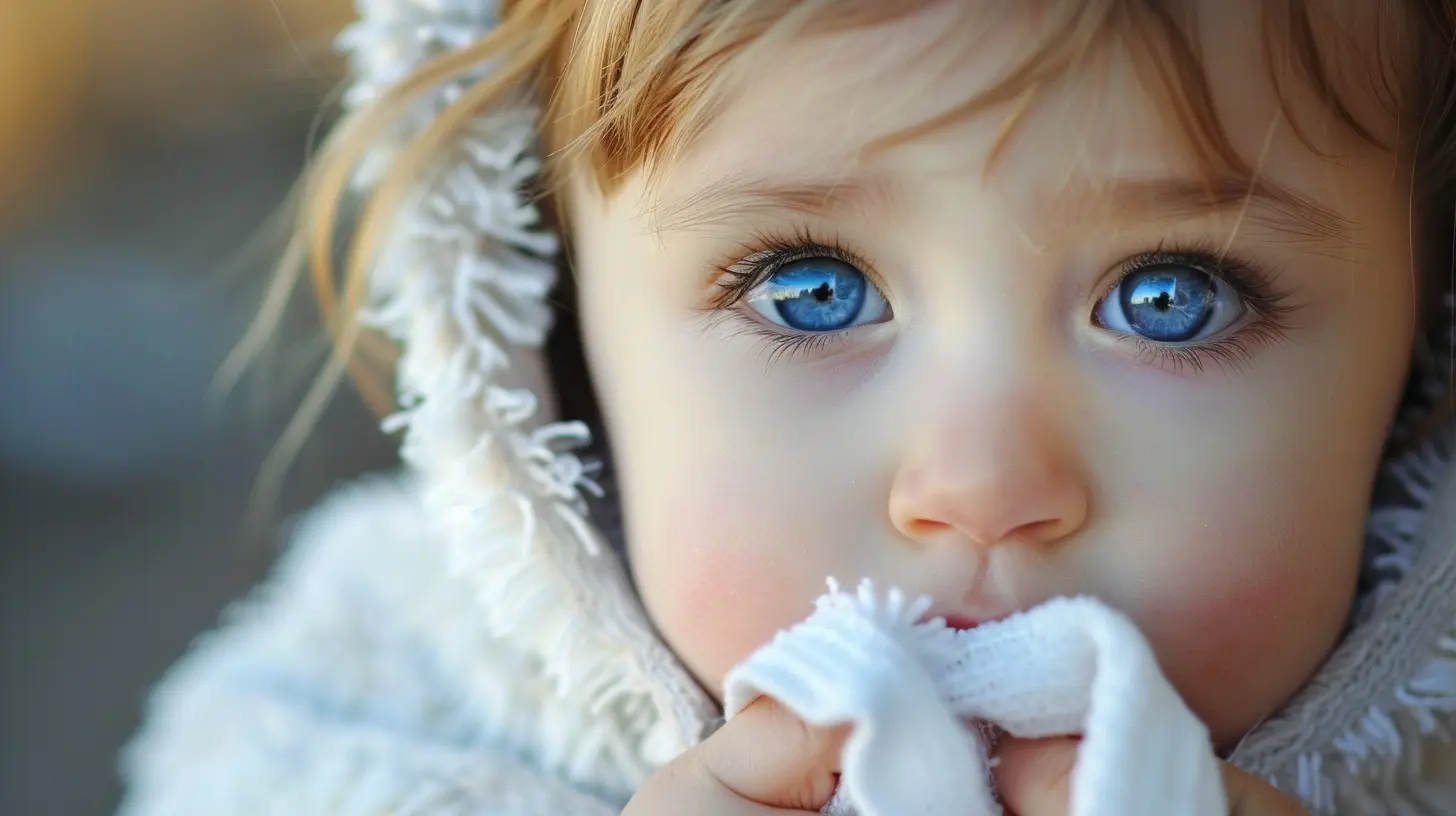Understanding Allergies in Babies and Early Detection
25 July 2025
Welcoming a new baby into the world is a rollercoaster of emotions—excitement, joy, and yes, a little bit of anxiety. One of the biggest concerns for new parents is their baby’s health, and allergies can be a major worry.
Is that rash just a heat breakout, or is it an allergic reaction? Is the frequent fussiness after feeding a sign of colic, or does your baby have a food allergy? These questions can send any parent into a Google rabbit hole. But don’t worry—I’ve got you covered.
In this article, we’ll break down everything you need to know about allergies in babies, how to spot them early, and what you can do to keep your little one safe and comfortable. 
What Are Allergies in Babies?
Allergies happen when the immune system mistakes a harmless substance—like food, pollen, or pet dander—for something harmful and launches an over-the-top defense response. This can lead to all kinds of symptoms, from sneezing and rashes to severe breathing difficulties.Babies have developing immune systems, which means they’re more vulnerable to allergies. Some reactions are mild, but others can be life-threatening, so knowing the signs is crucial.
Common Types of Allergies in Babies
Allergies in babies generally fall into three categories:1. Food Allergies – Milk, eggs, peanuts, soy, wheat, tree nuts, fish, and shellfish are the usual culprits.
2. Environmental Allergies – Dust mites, pet dander, mold, and pollen can trigger reactions.
3. Skin Allergies – Eczema, hives, and contact dermatitis can cause itching, redness, and irritation.
Each type of allergy has its own set of symptoms and triggers, making it important for parents to know what to look for. 
Early Signs of Allergies in Babies
Babies can’t tell us what’s wrong, so we have to rely on physical symptoms and behavioral cues. Here are some early signs that could indicate your baby has an allergy:1. Skin Reactions
- Red, itchy rashes- Eczema (dry, scaly patches)
- Hives (raised, red welts that appear suddenly)
2. Digestive Issues
- Constant spit-up or vomiting- Diarrhea or frequent loose stools
- Blood or mucus in the stool
- Unusual gassiness or bloating
3. Respiratory Symptoms
- Sneezing and runny nose (without a cold)- Persistent cough
- Wheezing or shortness of breath
- Nasal congestion
4. Behavioral Changes
- Excessive fussiness- Trouble sleeping
- Reluctance to feed (especially if they associate feeding with discomfort)
5. Severe Allergic Reactions (Anaphylaxis)
In rare but serious cases, an allergy can lead to anaphylaxis, a life-threatening reaction that requires immediate medical attention. Signs include:- Swelling of the lips, face, or tongue
- Difficulty breathing
- Sudden drop in blood pressure
- Loss of consciousness
If you notice any of these symptoms, call emergency services right away. 
How to Detect Allergies in Babies
1. Keep a Symptom Diary
Writing down when symptoms show up and what your baby was exposed to can help spot patterns. Did the rash appear after a new food? Did the sneezing start after visiting a friend with a cat? Tracking these details can give valuable clues.2. Try an Elimination Diet
If you’re suspecting a food allergy, eliminate potential triggers from your baby’s diet (or your own diet if breastfeeding) for a couple of weeks and see if symptoms improve. Then, slowly reintroduce foods one at a time to identify the culprit.3. Monitor for Seasonal or Environmental Triggers
If your little one has recurring symptoms like sneezing or coughing that don’t seem related to food, they might have an environmental allergy. Pay attention to whether symptoms worsen during specific seasons or in certain environments (like around pets or dust).4. Consult a Pediatrician or Allergist
Doctors can recommend tests like:- Skin Prick Tests – A small amount of allergen is placed on the skin to see if a reaction occurs.
- Blood Tests – Measures the level of allergy-related antibodies in the blood.
- Oral Food Challenges – Supervised food introduction in a clinical setting to pinpoint dietary allergies.
Testing isn’t always necessary for mild allergies, but for persistent or severe reactions, it can be a game-changer in managing symptoms. 
How to Manage and Prevent Allergies in Babies
1. Introduce New Foods Carefully
When starting solids (usually around 6 months), introduce foods one at a time, waiting 3–5 days before adding another. This makes it easier to identify any problematic foods.2. Continue Breastfeeding (If Possible)
Breastfeeding can help strengthen a baby’s immune system and may lower their risk of developing allergies. If formula-feeding, consider hypoallergenic formulas if your baby shows signs of a milk allergy.3. Keep the Home Allergen-Free
- Wash bedding and stuffed animals frequently.- Use an air purifier to reduce dust, pet dander, and pollen.
- Avoid strong fragrances or household chemicals that might irritate sensitive airways.
4. Be Prepared for Allergic Reactions
If your baby has a known allergy, always have antihistamines (if recommended by a doctor) and an emergency action plan. If prescribed, keep an epinephrine auto-injector on hand for severe allergic reactions.5. Get Pediatric Guidance
Your baby’s doctor can help tailor an allergy management plan, whether that’s working around food triggers or recommending medications for symptoms.Can Babies Outgrow Allergies?
Yes! Many babies outgrow allergies, especially to milk, eggs, and soy, by the time they reach toddlerhood. However, some (like peanut or tree nut allergies) may persist for life. Regular follow-ups with your pediatrician or allergist can help determine whether your child has outgrown an allergy.Final Thoughts
Dealing with allergies in babies can feel overwhelming, but early detection and careful management make a world of difference. Trust your instincts—if something doesn’t seem right, talk to your baby’s doctor. And remember, you’re not alone in this journey. With the right knowledge and a little patience, you can help your baby navigate allergies safely and comfortably.all images in this post were generated using AI tools
Category:
Baby CareAuthor:

Tara Henson
Discussion
rate this article
1 comments
Anna Mendoza
Great article! Early detection is key—your insights will really help parents navigate allergies.
August 10, 2025 at 2:21 AM

Tara Henson
Thank you! I'm glad you found the article helpful. Early detection truly makes a difference in managing allergies.


